Life’s but a walking shadow, a poor player
That struts and frets his hour upon the stage
And then is heard no more. It is a tale
Told by an idiot, full of sound and fury,
Signifying nothing.
William Shakespeare, Macbeth, Act 5, Scene 5
Convenience of modern life comes with environmental trade-offs, inconvenient truths.
This report was researched and written using a Mac Book Pro whose power was stored in a lithium-ion rechargeable battery that needs cobalt. The original power stored in the battery was likely generated by coal dug up by miners in eastern Utah and transported to a power plant using trains and trucks powered by diesel fuel refined after being pumped up from fields also located in eastern Utah.
Consumers in the United States, like myself, use the majority of the world’s cobalt. Prices for it on the world market reflect our skyrocketing demand. But there’s a darker cost: a history of human-rights violations, including use of child labor associated with production of 66 percent of the world’s supply in the Democratic Republic of the Congo.
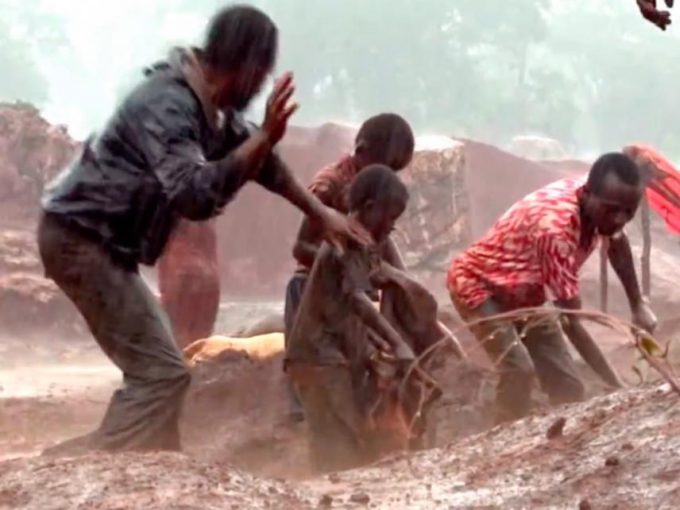
Children grub for cobalt in the Democratic Republic of Congo, the global source of more than half of the raw ore used in rechargeable lithium-ion batteries. (Sky News)
As consumers, we have an absolute moral and possibly a national security imperative to explore alternatives to cobalt dug up overseas under conditions of unimaginable horror and embedded in our lifestyle. (The Department of Homeland Security considered one cobalt mine in the Congo so vital that its “incapacitation or destruction … would have a debilitating impact” on U.S. security or the national economy.)
One alternative could be the proposed subsurface Colt Mesa cobalt and copper mine 30 miles or so east of Boulder, Utah, just outside the current boundary of Grand Staircase-Escalante National Monument in southern Utah.
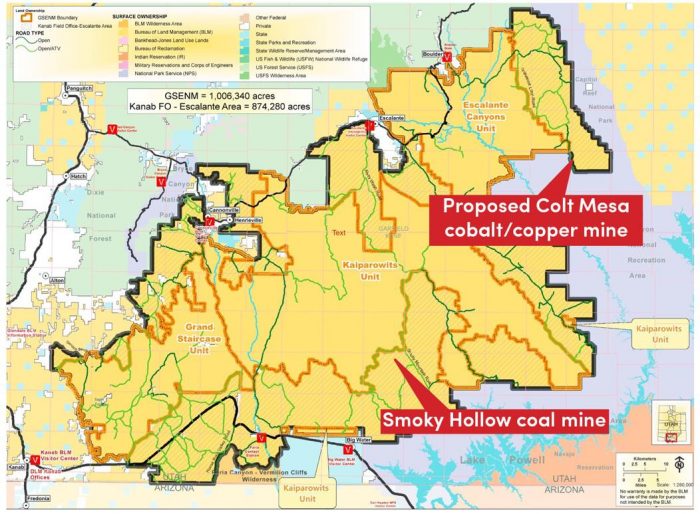
Three of Grand Staircase-Escalante’s current units plus its “excluded areas.” A small subsurface mine at Colt Mesa has been proposed. Planning and permitting required to begin operations of the Smoky Hollow coal mine were shut down when the monument was created in 1996. Click to see the BLM map.
Yet even the remote possibility of its becoming a reality has unleashed a backlash of NIMBYism (“not in my backyard”). The refrain goes something like this: “We like our cell phones. Electric cars can power a clean transportation future. Just don’t go digging holes in our desert preserve for the stuff that makes ’em work. Dig for cobalt someplace else.”
Currently, the only “someplace else” in the United States is about 500 miles north at a mine poised to begin operations in the Idaho Cobalt Belt.
Unlike their Utah counterparts, members of the Idaho Conservation League out of Boise don’t seem to mind it their backyard. Or, they’ve at least been willing to work with miners to ensure operations near Salmon and processing facilities in Blackfoot are clean and safe.
An agreement between the Idaho environmentalists and Canada-based eCobalt established a conservation fund for projects near the mine, and they’ll be monitoring eCobalt to ensure it abides by environmental regulations. The company says it’s committed to the ethical demands of global giants such as Tesla and Apple, which is considering the Idaho cobalt as a source that guarantees its products aren’t connected to atrocities.
However, Glacier Lake Resources, which has staked a claim to the long-abandoned mine down in Utah, faces problems that might discourage investors, according to Tim Peterson at the environmental nonprofit Grand Canyon Trust, and render the whole thing moot. First, there’s simply not much water. Then, there’s an absence of heavy-duty haul roads, electricity and access to rail lines. It’s a long, long way from anywhere the ore could be processed.
What’s more, Panasonic, supplier of Tesla batteries, announced in May that it’s developing a battery that doesn’t need cobalt. Demand for the morally dirty mineral is elastic. While currently increasing and expected to exceed supply within the next few years, demand might plummet if viable alternatives can be developed.
President Donald Trump’s proclamation last year shrunk the monument to a little over half of its original size and placed the mine outside its boundary. Environmentalists considered it a bald-faced attack on the foundations that helped create the National Park system, the Antiquities Act, and they’re pulling out all the stops to reverse it.
Why would any investor pump tens of thousands into preliminary phases of a project that could go belly up because of an adverse ruling in federal court?
(Litigation could be politically useful for environmentalists, possibly delaying full implementation of the proclamation until the president leaves office and a more sympathetic administration takes over. Alternatively, the Bureau of Land Management has fast-tracked the normally lengthy process of writing a plan to guide monument land use. Have agency managers been directed to speed things up to ensure Trump’s version survives his rocky tenure? Once done, this stuff is difficult to undo.)
Potential Colt Mesa investors likely understand the risks.
It’s just not a serious proposal, according to Drew Parkin, an economic development consultant for Garfield County and former field station manager for the monument. “I am going to say that I’m 95 percent confident that what you’re hearing now are basically scare tactics.” Much of the monument lies within Garfield County.
BLAKE SPALDING, CHEF AND CO-OWNER OF HELL’S BACKBONE GRILL, an upscale-rustic restaurant in Boulder, personifies Utah’s style of tourist- and outdoor recreation-oriented environmentalism – eloquent in describing southern Utah’s splendor, embraced among political progressives, embattled and uncompromising.
According to writer and board member of Southern Utah Wilderness Alliance Terry Tempest Williams, “Blake Spalding and (co-owner) Jen Castle are alchemists, truly changing the world through their hands, their hearts, their farm, their food. In community, everything is possible. Theirs is a leadership of love.”
Spalding’s reaction to the proposed cobalt mine is visceral. It echoes powerful nonprofits allied to block land-use plans of Trump and his Interior Secretary Ryan Zinke for Grand Staircase and Bears Ears National Monument – virtually anything that could be even remotely connected to mining, oil and gas development, ranching and the good-paying jobs that would follow – no matter how environmentally responsible or unlikely given global market conditions and ground-level logistical obstacles.
She is a frequent source for regional and national media and prominent on videos and at rallies.
Last July, as the Outdoor Industry Association’s trade show prepared to decamp for Denver, Spalding was among notable speakers at a Salt Lake City rally who were critical of Utah Gov. Gary Herbert. “Our governor needs strong medicine to understand what he has done to our state by not standing up for public lands.” They included Amy Roberts, executive director of the OIA, Adam Cramer, executive director of the Outdoor Alliance, John Sterling, executive director of The Conservation Alliance, Conrad Anker, a professional mountain climber who promotes products sold by The North Face, Jerry Stritzke, CEO and president of REI, and Salt Lake City Mayor Jackie Biskupski.
(The state of Utah spends about $20 million dollars a year to promote tourism in Utah, much of that going to a marketing campaign titled “Experience the Mighty 5: Utah’s National Parks” put together by the Governor’s Office of Economic Development and its Office of Tourism. It focuses exclusively on public lands. The “scenic” route suggested in a promotional video on the campaign’s website – from Bryce Canyon National Park to Capitol Reef National Park – funnels thousands of potential patrons past Spalding’s remote restaurant and through the Grand Staircase. The route begins at Zion National Park, which saw 4.1 million visitors last year.)
“We’re the Shire, and the Orcs are gathering on our borders,” Spalding said in a piece published online by NPR (She likely was referring metaphorically to political opponents as depicted in “The Lord of the Rings,” not tourists). “It’s heavy, it’s dark, it’s frustrating. I feel like no one is listening to us or the millions of people who care very much that the monument be left intact.”
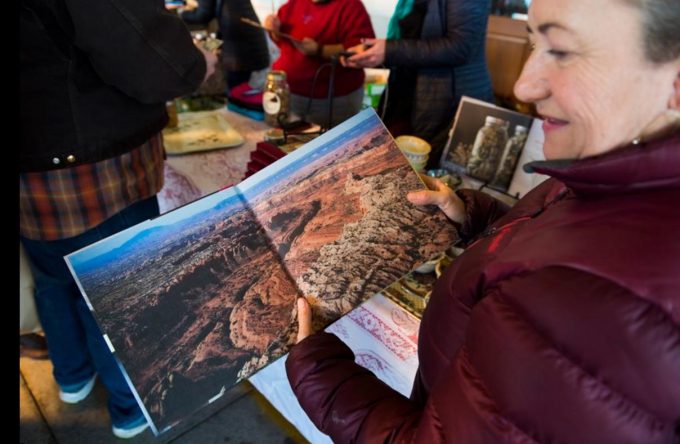
Blake Spalding promotes her cookbook, “This Immeasurable Place: Food and Farming from the Edge of Wilderness,” in a Salt Lake Tribune photo that accompanied her op-ed.
On July 29, The Salt Lake Tribune, whose reports play a role in forming regional and national public opinion on environmental issues in Utah and across the West, published an op-ed by Spalding. She wrote, “Already the bulldozers have arrived on the Burr Trail to begin the destruction of our priceless landscapes, in order to provide access to the mine.”
It was not true. “The Bureau of Land Management looked into the question of bulldozers near the Colt Mesa Mine and on the Burr Trail Road and found no evidence to support these claims,” said Kimberly Finch, communications director of the Bureau of Land Management’s Utah State Office.
Results of the BLM investigation were confirmed by Garfield County commissioners, according to Parkin. Several environmentalists who monitor activity within the monument said they knew nothing about possibly illegal bulldozer activity.
The week after the Tribune published Spalding’s op-ed, it quoted her in a report written by Thomas Burr, the paper’s Washington, D.C.-bureau chief. “She personally hasn’t seen any bulldozers but heard secondhand that an area of the trail that was impassible (sic) this spring is now driveable by two-wheel drive vehicles. She says it could have been Garfield County that improved the road but she chalks that up to the county seeking to help the mine start up again as soon as possible.”
Burr then quotes another environmentalist who earns a living off of tourism. “Ashley Korenblat, managing director of Public Lands Solutions who also owns Western Spirit Cycling in Moab, says it’s likely that improvements are happening on public roads as a way to spur development on the former monument land while awaiting BLM permits.”
“ ‘Lots of counties, when they’re desperate for resource extraction to start up again, they do the one thing they can do, which is affect the transportation,’ Korenblat said Friday.”
A third environmental activist, attorney Steve Bloch, who works for SUWA, said there’s a greater “chance for mischief” because the BLM-managed land is not protected by monument status.
The Tribune published speculation and uninformed opinion from political activists. The misinformation has not been clarified or corrected.
“It’s troubling when the Salt Lake Tribune, Utah’s foremost journalistic organization, prints opinion pieces without checking the foundational facts,” said media watchdog Joel Campbell, who teaches at Brigham Young University in Provo, Utah. “The Tribune has abdicated its journalistic responsibility.”
Regarding Spalding’s commentary, Campbell suggested that a Tribune editor simply could’ve made a few phone calls to check the basics, perhaps demanding confirming notes, sources or photo documentation.
“In the case of bulldozers, photo documentation would have sufficed.” Without such standards, can the Tribune really continue to stake a claim as the preeminent and most accurate voice in Utah journalism? asked Campbell.
(Editor: Jennifer Napier-Pearce, editor of the Salt Lake Tribune, George Pyle, opinion-page editor, and Burr, Washington, D.C., bureau chief, did not respond to email requests for comment.)
NATIVE AMERICAN ACTIVISTS AT THE FOREFRONT of the political campaign to create and now litigate Bears Ears National Monument, across the Colorado River east of Grand Staircase, have brilliantly leveraged their cultural identities to inoculate themselves against critics. Really good political communicators always look for that Holy Grail of sorts.
Utah Diné Bikéyah, a group of Navajos and Ute Mountain Utes, has used Navajo spirituality as a political tool. It’s probably been an effective way to influence many Euro-American progressives, even those who tend to be skeptical of national policy based on religion – especially in a state whose culture and civic life are permeated, even dominated in certain ways, by one religion, The Church of Jesus Christ of Latter-day Saints.
Jonah Yellowman, a Utah Diné Bikéyah board member and spiritual adviser, and others give voice to a historically marginalized group of Americans (Using the word “marginalized” is a monstrous understatement when the topic touches genocide). Whether their narrative is true, littered with unintentional fuzziness or intentionally riddled with half-truths to attain a political goal, the rhetorical line has been drawn between Trump, Zinke and their oil and gas buddies versus Native Americans protecting their sacred ancestral sites. Cross it at your peril.
Non-Native American pro-monument activists have not done badly either.
One clever twist in the multimillion dollar, multiyear campaign to create Bears Ears and preserve other parcels of public land as well was to hire a 9-year-old actor. He’s now 10.
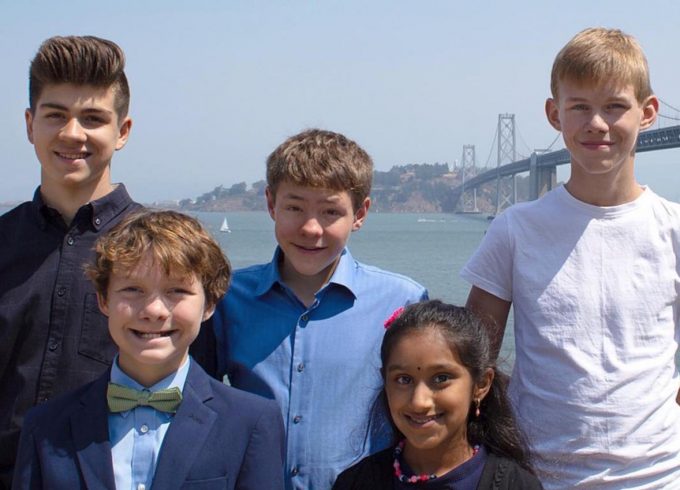
Robbie Bond, first row left, poses with other winners of the “Eco Hero Youth Award” on Aug. 25 in San Francisco. Robbie is an actor whose environmental campaign is supported by Patagonia.
Robbie Bond has emerged as a spokesperson, untouchable in the way Smokey Bear is untouchable. Inoculated rhetorically. I would challenge anyone reading these words to find one news media source that has identified Bond as an actor or asked why he shouldn’t be in school instead of going on hikes in southern Utah. Where are his parents?
Since the middle of July 2017, Robbie and his Kids Speak for Parks campaign have been tireless. He has a website, a Facebook page and a Gofundme site. He’s been criss-crossing the country producing videos. His stops have included Washington, D.C., Washington state, California, Hawaii, Utah, Colorado, Idaho, Nevada and Wyoming. He has a “sponsorship” from Patagonia, according to Nonprofit Quarterly. He’s appeared at Patagonia outlet stores in Salt Lake City and Reno, Nev. He pals around with many of the key players involved in the effort to keep Trump and Zinke from what they might believe is their date with destiny.
He’s got an agent in California and a PR firm in Washington, D.C., guiding his “grass roots” effort.
The young actor has gotten extensive media coverage across the West, including KUTV and Fox13 in the Utah market. Perhaps most notably, he was named “Thursday Hero of the Week” in a Nov. 2, 2017, piece written by Utah-based freelance writer Cathy Free and published in the online version of People magazine.
The rhetoric of Blake Spalding is just as untouchable. She has successfully fused feminist and progressive public-land politics, Buddhist-inspired “culinary spirituality” and an entrepreneurial business sensibility – remarkably, in one of the reddest parts of a deeply red state.
Spalding was quoted in a recent Ms. magazine blog titled “Politics is on the Menu at Hell’s Backbone Grill” written by her sister, Lavinia. “Jen (Castle) and I explain to our staff that there’s nothing that’s not political. The food you eat is political, the free agency you have over your bodies is political, the ground you stand on is political. So what’s the point of being apolitical when everything that matters is under threat? I’m fighting like hell, and if I have to use my restaurant to do it, I’m grateful to have a platform.”
She said the restaurant offers an opportunity to “proselytize” her “counter-cultural” vision.
As with Bears Ears, a line has been drawn. Cross it and you mess with a story created and told over and over by the crème de la crème of influential national travel and food publications – purveyors of a lifestyle that most of us aspire to, including O, the Oprah magazine, Sunset, Bon Appetit, Organic Gardening, Outside Traveler, Travel and Leisure, National Geographic Traveler, More, Gourmet and Men’s Journal. One real estate company even attempts to piggy back on cachet of Hell’s Backbone.
(Editor: Spalding declined to be interviewed.)
MISINFORMATION, SPECULATION AND UNSUBSTANTIATED OPINION masked as fact are routinely published nationally by even the “big foots” – The Washington Post, CNN (See the Zephyr’s report on journalistic malpractice at CNN), NPR, The Guardian and others.
The flow often begins with environmental nonprofits and sympathetic media. The stuff is distributed and aggregated online to tens of thousands of readers around the nation and the world, accepted as true then hard-wired into conventional wisdom.
On Aug. 15, BLM invited the public to comment on four proposals to manage Trump’s version of Grand Staircase-Escalante National Monument. The drafts ranged from no change in the current plan to least restrictive to most restrictive. News media across the country fixated on the agency’s “preferred” option, which would restrict activities such as coal mining, the least.
A report by The Guardian, a United Kingdom newspaper that publishes an online edition for readers in the United States, is representative. “US officials have announced plans to allow increased mining on land that once belonged to two national monuments Donald Trump shrank, and to sell off some of the land despite pledges not to do so.”
Without poring through a mountain of documents produced by the agency, you’d likely assume the decision was a done deal. “The lands Trump tried to cut out of the Staircase have an ‘open for business’ sign on them. Off-road vehicles, coal mining, drilling and other activities that without a doubt would destroy monument objects would be allowed,” said SUWA’s Steve Bloch.
It’s not a done deal. Regional and national media have only given activists such as Bloch license to commit hyperbole in the first degree. Only in flights of fancy would any of the four alternatives or combinations of the four allow activities that “without a doubt” destroy monument objects.
Zinke never lied about selling off federal land nor did he recommend sale of land within the former boundary of Grand Staircase, as Chris D’ Angelo reported in The Huffington Post and SUWA declared in the above tweet. In an update two days later, D’Angelo walked it back but retained the erroneous information and inflammatory language. “The Trump administration has scrapped its proposal to pawn off more than 1,600 acres of federal land that until recently were protected as part of Utah’s Grand Staircase-Escalante National Monument.”
Huffington characterized as “fishy” proposals to sell off land, but it’s been relatively common for the BLM, Forest Service, National Park Service and the Fish and Wildlife Service under previous presidential administrations to do exactly that. The reasons are not particularly amenable to click-bait headlines. “The disposal authorities generally are designed to allow federal agencies to dispose of land that is no longer required for a federal purpose, might be inefficient to manage, or might be chiefly valuable for another purpose. For instance, disposal might be authorized to allow lands to be used for agriculture, community development, mineral extraction, or educational purposes,” according to the Congress Research Service.
No matter. The Washington Post picked up the storyline and sent it everywhere. Its headline still says, “Zinke said he would never sell public land. But the Interior is considering it.”
What the heck did BLM mean by a “preferred” alternative? Crickets from regional and national reporters – which seems odd given they teed off on that one alternative to the exclusion of the other three.
So I did some Internet mining and found the regulations, specifically 43 CFR 1610.4-7, that require identification of a preferred alternative. BLM’s Kimberly Finch declined to explain why the agency picked one over another. The Code of Federal Regulations, however, offers this: “The Field Manager in collaboration with any cooperating agencies, will evaluate the alternatives, estimate their effects according to the planning criteria, and identify a preferred alternative that best meets Director and State Director guidance.”
“The identification of a preferred alternative does not constitute a commitment or decision in principle, and there is no requirement to select the preferred alternative,” Finch wrote in an email. “The identification of the preferred alternative may change between a draft EIS and final EIS. Various parts of separate alternatives that are analyzed in the draft can also be ‘mixed and matched’ to develop a complete alternative in the final as long as the reasons for doing so are explained.”
About two weeks earlier, I had read a report by Sara Ventiera, “Meet the Restaurateurs Fighting to Save the Grand-Staircase Escalante Monument,” that appeared on the website of a public radio station in Alaska’s Aleutian Islands, KUCB. The same report appeared on NPR’s primary website and other sites, including Salt Lake City’s KUER, part of the public radio network. Nicole Croft, executive director of Grand Staircase-Escalante Partners, based in Kanab, Utah, was quoted saying “people have been illegally driving all-terrain vehicles through the monument, vandalizing archaeological sites and burning fires all over the land.”
I asked her to document those claims.
Croft (Aug. 14): We are indeed seeing these dreadful behaviors and illegal acts and are reporting them and documenting them for our litigation. When the Monument was threatened last year, we worked with partners to create an app people could download to document what they see out on the land.
Keshlear (Aug 14): I would very much like to see your documentation of an increase in illegal ATV activity, vandalism of archaeological sites and ‘burning fires all over the land’ since the Trump proclamation last December. Reports filed to law enforcement agencies of alleged incidents within the past eight months and currently under investigation would be helpful. Please send anything you’ve got. Or a link.
Croft (Aug. 16): I’m afraid your inquiry has hit at a difficult time – we just received the BLM draft plans for review and we are up to our eyeballs in hundreds of pages of review. I am working with my tech folks to get more updated data, but I’ve attached a spreadsheet of reports from our app dated 6/5/18.

One of three pages of raw data compiled from an app used by Grand Staircase-Escalante Partners to document damage to the monument.
Keshlear (Aug. 16): I’ll look forward to your analysis of the data retrieved from the app.
Just glancing at your list, there seems to be a lot of duplicate entries. Only two or three separate references to archeological sites, which you mentioned as a concern in the NPR piece. I don’t really understand the reference to “burning fires all over the land.”
It’s hard to determine whether any of the illegal OHV activity you’ve documented can be connected to Trump’s downsizing of the monument. I’d like your thoughts on that. How would successful litigation and restoration of Clinton’s version of GSENM without beefed up law enforcement combined with ever-increasing tourism make much of a difference to preservation efforts?
Looks like there’s a wide range of opinion on what comprises a problem. Invasive species? Chaining of sage brush? Bulldozing roads?
Again, reports filed to law enforcement agencies of alleged illegal incidents within the past eight months and currently under investigation would be helpful.
Keshlear (Aug. 27): Just a follow-up on my questions regarding your comments in a report titled “Meet the Restaurateurs Fighting to Save the Grand-Staircase Escalante Monument” and published nationally by NPR, specifically “people have been illegally driving all-terrain vehicles through the monument, vandalizing archaeological sites and burning fires all over the land.”
(Editor: Croft did not respond further. Maria Goday, an editor of Ventiera’s report, did not respond to email questions regarding fact-checking of sources.)
JUST TO THE WEST, expansion of the Coal Hollow Mine outside of Alton, Utah, came a step closer to reality just before Labor Day when the Interior Department released its Record of Decision.
The mine is about 10 miles away from Bryce Canyon National Park and about 20 miles east of Zion National Park. Bryce’s air quality and scenic views – even the sounds and sense of being in a special place – could be threatened, according to critics, because of raw industrialization associated with the mine. Although the park’s nighttime skies do not meet the highest standard set by the International Dark Skies Association, a non-profit that promotes astro-tourism, they’re some of the darkest nighttime skies of any park in the lower 48 states, a distinction environmentalists such as SUWA, National Parks Conservation Association, Natural Resources Defense Council and Sierra Club fear might be in jeopardy.
“The Trump administration has repeatedly put corporate interests ahead of the American people in issues of public land management, so this is a disappointment but certainly not a surprise. Our organizations remain strongly committed to protecting the climate and the landscape, environment and cultural resources in southern Utah,” the groups said in a joint statement.
From this kind of self-serving, politically tinged boilerplate, you’d likely never know concerns raised, including the impact of light pollution on Bryce’s astronomical attraction, its dark skies, have been studied ad nauseam over three presidential administrations.
“It seemed to me that the Utah Sierra Club raised the night sky issue as a red herring issue to stir a Salt Lake base that abhors coal and would be willing to grab on any assertion that the mine was a bad thing,” said Parkin, the Garfield County economic development consultant.
“ASTRO-TOURISM” AND MINE AND MOTEL LIGHTS
“Astro-tourism” is a big draw for Bryce Canyon National Park and adjacent Ruby’s Inn, pictured above. The latest study conducted by Bryce Canyon NP into light pollution, in 2007, determined that the primary sources were nearby towns of Tropic and Bryce Canyon City, a cluster of motels, restaurants, gift shops, recreational-vehicle campgrounds and assorted tourist attractions just outside the park’s gates, according to John Barentine, public policy director of the International Dark Sky Association. IDSA promotes eco- and astro-tourism. Ruby’s Inn has continually retrofitted its operation over the years to mitigate light pollution, according to its marketing director, Jean Seiler. Yet the resort complex and Tropic have not adopted IDSA’s model for small cities, which requires limits on brightness and fully shielded light fixtures that emit no light at or above horizontal. While the park itself has not attained the organization’s highest sky-quality tier, according to Barentine, astro-tourism programs have boomed over the past few years and are heavily promoted.
Bryce has attained IDSA’s “silver” tier: “Nighttime environments that have minor impacts from light pollution and other artificial light disturbance, yet still display good quality night skies and have exemplary nighttime landscapes.”
The Final Environmental Impact Statement released by the Interior Department says light from the proposed mine expansion 10 miles from Bryce would be less than that emitted by surrounding towns and cities and would not be visible from inside the park. Since the expansion would occur on public land, mitigation of adverse impacts could be required. That’s not the case with private property even closer, in Tropic and Bryce Canyon City.
I could find no general-interest media outlet that has published anything specifically citing Interior’s science-based Final Environmental Impact Statement on the Coal Hollow Mine. I easily found, however, dire prognostications such as this from 2015: “The impact of the mine expansion on the local environment would be significant. It would pollute the air, flood Bryce Canyon’s world-famous dark night skies with light, degrade the habitat and health of wildlife such as the imperiled sage grouse, lower water quality, and mar one of the most majestic landscapes in the world.”
Nothing about the mine’s impact, if any, on cultural resources, geology and minerals, land use and access, livestock grazing, paleontology, socioeconomics, soils, vegetation or water resources.
Nothing about the mine’s impact, if any, on sage-grouse or other wildlife habitat, air quality or noise.
Nothing about the mine’s impact, if any, on highway traffic, on-going reclamation efforts or the night sky above Bryce.
But it’s all there.
On sky glow: “The study conducted by Dark Sky Partners concludes that the predicted sky glow visible from Yovimpa Point in Bryce Canyon National Park would be less than that produced by several small towns in the general area. … Although the impacts of the Proposed Action would not reach a level of significance, there is a high value placed on night sky resources at Bryce Canyon. The mitigations listed in Section 4.2.5 are recommended to further reduce impacts to night sky conditions.” (4.2.4.2.4 Viewshed Analysis and Nighttime Lighting)
On noise: “All combined mining activities … would produce no detectable noise levels at any of the Bryce Canyon receivers.” (4.2.2.2.1.2 Noise Modeling Results)
On air pollution: “The modeling analysis shows that the application of design features and mitigation measures … would ensure that violations of air quality standards would not occur under any action alternative.” (2.7.1.14 Alternatives and Options Considered but Eliminated from Detailed Analysis)
On preserving sage grouse habitat: “In the event of a lease sale, the sage grouse mitigation plan (see Appendix E) would be adopted as a design feature for any action alternative that is selected. The purpose of the sage grouse mitigation plan is to describe the strategy for avoiding, reducing, and compensating for impacts to the sage grouse populations potentially affected by leasing and mining the tract. The sage grouse mitigation plan is intended to prevent mining activity surface disturbance from outpacing vegetation treatments aimed at increasing available habitat for sage grouse.” (2.6.1.7 Greater Sage Grouse Mitigation Plan)
On the impact to recreation access as a result of coal truck traffic: “Impacts to recreation access would be negligible. … However, visitors using US 89 to access Bryce Canyon National Park and other recreation areas may encounter increased traffic levels caused by coal haul truck traffic on the coal haul transportation route. This increased traffic may affect visitors’ enjoyment of the US 89 Scenic Byway through the traffic’s associated noise and pollutant emissions.” (4.11 Recreation)
On water pollution: “Under any action alternative, the successful bidder would be required to comply with state and federal mining regulations intended to reduce or eliminate impacts to surface and groundwater resources.” (4.16 Water Resources)
And so on …
Powerful nonprofits, unaccountable to residents of communities near some of Utah’s most scenic landscapes and their elected officials, have built a rhetorical wall of misinformation to stymie any plan of Trump and Zinke that could be even remotely connected to mining, oil and gas development, ranching and the good-paying jobs that would follow. It doesn’t seem to matter whether those plans are aesthetically and environmentally responsible or even unlikely given global market conditions and ground-level logistical obstacles. For the most part, conventional news media just publish what they’re handed.
The tale of “destruction of our priceless landscapes” is full of sound and fury, signifying nothing.
POSTSCRIPT: Hell’s Backbone Grill in Boulder fulfills much of the stringent criteria the Global Sustainable Tourism Council uses to define sustainable tourism – unlike even the most dominant of tourist-oriented corporations in Utah. The council establishes and manages voluntary global standards. “It was created jointly by United Nations agencies and prominent international conservation NGOs to develop global standards for sustainable travel and tourism and to create tools to verify legitimate claims of sustainable businesses, while fighting against false claims sometimes known as ‘greenwashing,’ “ said Randy Durband, CEO, in a video on the Council’s website. Only Jackson Hole (Wyo.) resort and the Town of Vail (Colo.) are certified as sustainable in the United States.
Consistent with the restaurant’s farm-to-table approach, lamb, beef and pork are all from Boulder or close by. Vegetables come from the restaurant’s organic farm, which boasts a variety of tomatoes, peppers, greens and herbs. Fruits are gathered from local historical orchards.
It works to conserve natural resources and reduce its carbon footprint. The restaurant pays employees above the level of similar food and beverage jobs within or adjacent to Utah and federal nature and cultural preserves.
Although Spalding offers locals discounts, the restaurant and its terrior culinary philosophy are alien to residents of rural Garfield County living from paycheck to paycheck in a poverty-wage economy in which most residents subsist on seasonal tourism. An entrée at Hell’s Backbone could cost $30, salad $10, glass of wine $10 and dessert $10. Dinner for two, including taxes and tips, could cost upward of $150.
The Council emphasizes support and engagement of host communities and cultures. In Garfield County, the host culture comprises members of the LDS Church, proud of their hardscrabble pioneer heritage. GSTC criteria encourage local participation in planning and decision-making of destination managers, tour operators and hotel operators.
(Bill Keshlear regularly contributes to the Canyon Country Zephyr. He was an editor at The Salt Lake Tribune until taking a job as communication director for the Utah Democratic Party in 2007 and 2008.)
To comment, scroll to the bottom of the page.
Don’t forget the Zephyr ads! All links are hot!

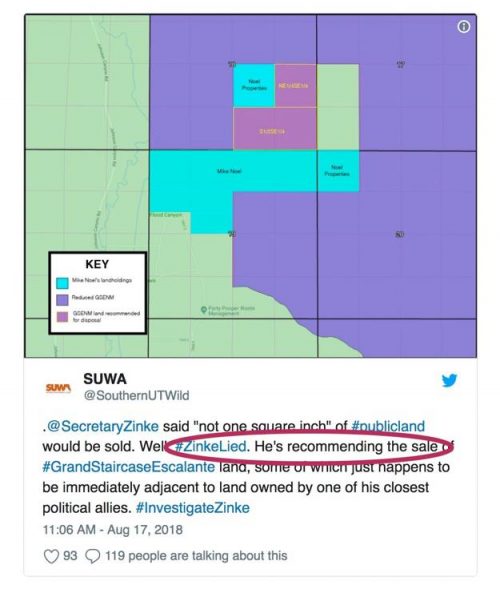
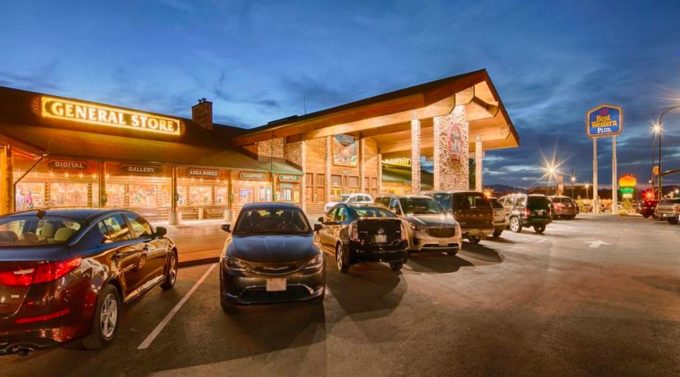





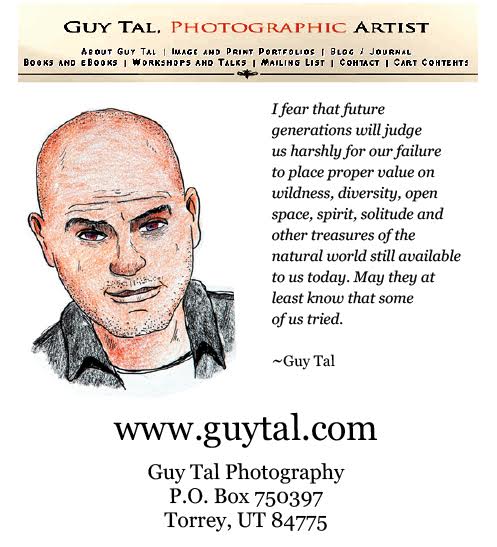
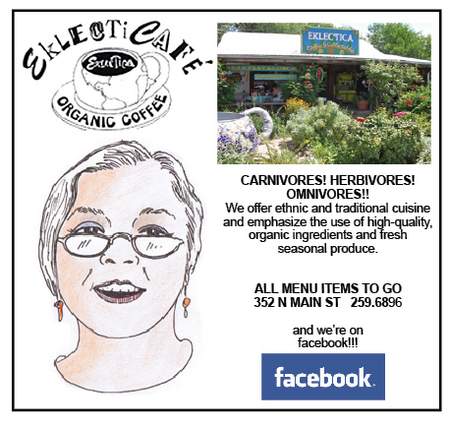
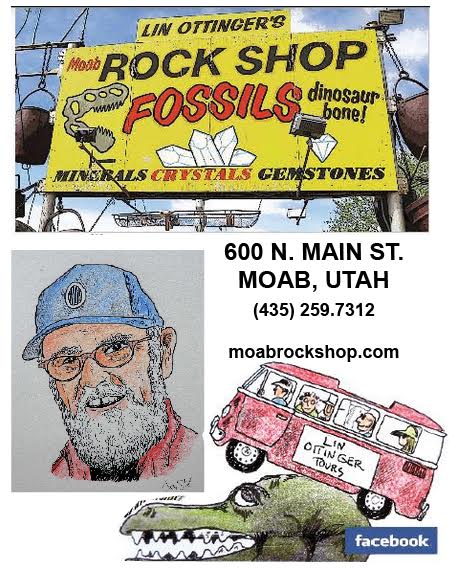
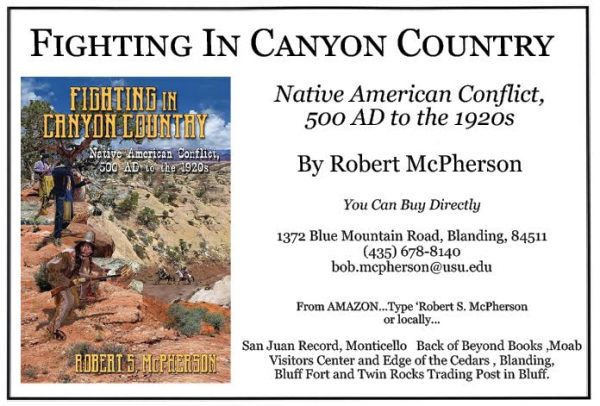
Thank You Zephyr! Somebody has to say it and the Z is just about the only place I ever hear about any of this. The traditional mainstream media wants to promote a white hat/black hat dichotomy between traditional extractive industry and environmentalists. While I tend to accept the over-reach of the left more readily than the right, it’s all rather pathetic in the long run. Reasonable middle-of-the-road perspectives just don’t sell papers, websites, blogs, television news, etc. Walk the middle path and you will be vilified by extremists at both ends of the spectrum. Witness the plight of the Canyon Country Zephyr itself.
[…] Canyon Country Zephyr […]